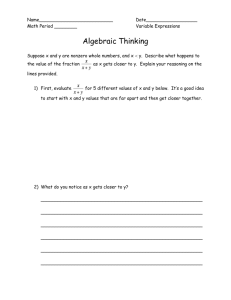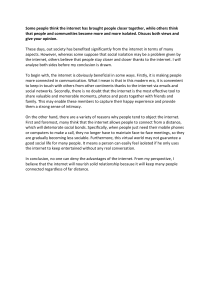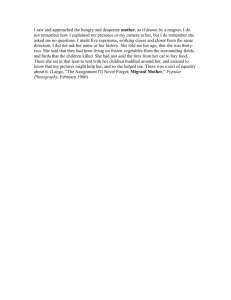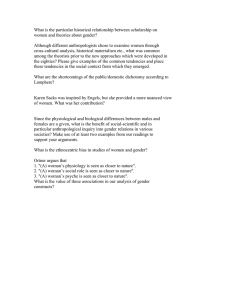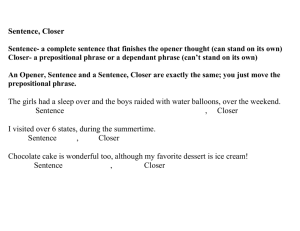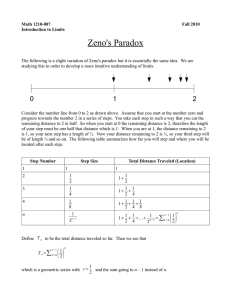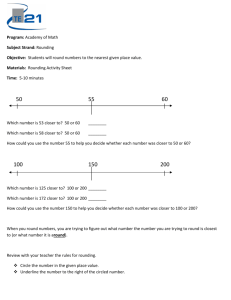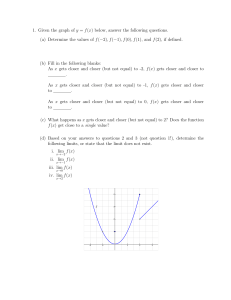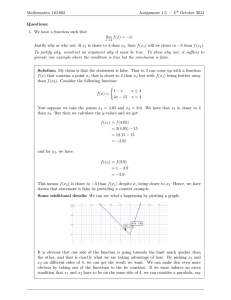2.2 number 1. Explain in your own words what is meant by the
advertisement
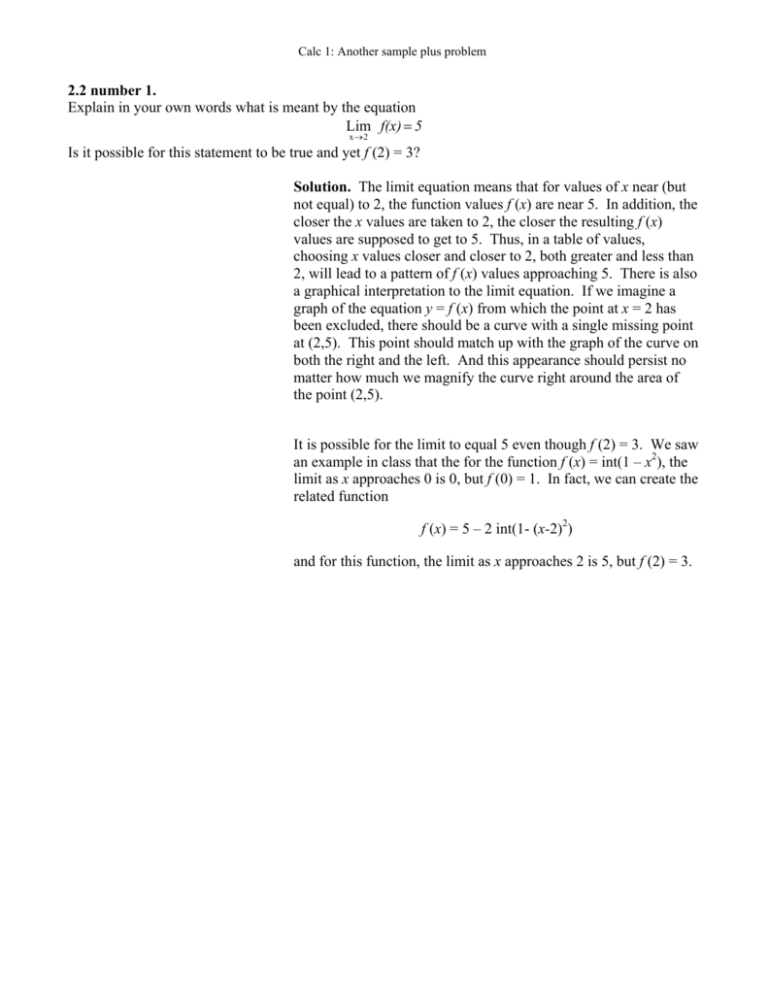
Calc 1: Another sample plus problem 2.2 number 1. Explain in your own words what is meant by the equation Lim f(x) = 5 x →2 Is it possible for this statement to be true and yet f (2) = 3? Solution. The limit equation means that for values of x near (but not equal) to 2, the function values f (x) are near 5. In addition, the closer the x values are taken to 2, the closer the resulting f (x) values are supposed to get to 5. Thus, in a table of values, choosing x values closer and closer to 2, both greater and less than 2, will lead to a pattern of f (x) values approaching 5. There is also a graphical interpretation to the limit equation. If we imagine a graph of the equation y = f (x) from which the point at x = 2 has been excluded, there should be a curve with a single missing point at (2,5). This point should match up with the graph of the curve on both the right and the left. And this appearance should persist no matter how much we magnify the curve right around the area of the point (2,5). It is possible for the limit to equal 5 even though f (2) = 3. We saw an example in class that the for the function f (x) = int(1 – x2), the limit as x approaches 0 is 0, but f (0) = 1. In fact, we can create the related function f (x) = 5 – 2 int(1- (x-2)2) and for this function, the limit as x approaches 2 is 5, but f (2) = 3.
